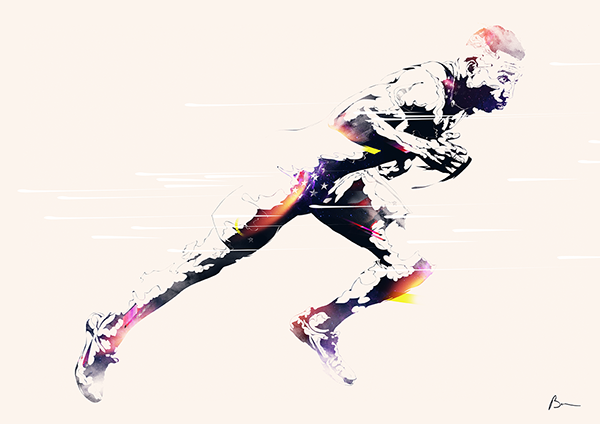Many clients come to me wondering if there are ways they could work on their running form to reduce their risk of injury and run more efficiently. The truth is most professional athletes can still work on improving their technique.
In this blog post, I have listed ways to identify some of the most common running form issues. Ideally, you want a friend to film you or take pictures of you running to confirm the problem. Once the technical issue is identified, you would be surprised by the incredible improvements in speed and comfort when running you will experience!
Correcting it: keep your core tight, make your lower back flat and place your pelvis in neutral position while letting yourself fall forward, leaning from the ankle, not the waist. The best way to teach your body how it should feel is to stand about two feet from a wall and letting yourself fall forward, catching yourself in a standing pushup position.
Correcting it: push your big toes against the top of your shoe as you land. It should stop your foot from plantar flexing. Doing drills with a focus on leaning forward at the ankles should also help.
1. Your lower back gets tired/sore fast when running
Mistake: It might be a sign that you are either bending forward at the waist or, worse, leaning back and arching your lower back when running.
If your lower back always hurts after running, it might be a sign you are not running with good upper/lower body alignment.
Femme s’épongeant le dos by Degas
Proper form: When your back leg is fully extended, your whole body should lean forward from the ankles with your whole body forming a straight line all the way up the leg and spinal cord to the top the runner’s head.


Michael Duane Johnson by @BramVanhaeren
During both group and personal Ready 2 Run training sessions we always integrate drills to teach good running form. Wall pushups, wall runs and resisted runs are among the tools used to teach the lean from the ankle
2. Your hamstrings tire fast and your heels hit the ground first when running
Mistake: It might be a sign that you are overstriding. This means you are reaching forward with your heel (or even toes), then pulling the ground towards you using your hamstrings.
If you can see your whole lower leg and foot when looking down,
you are likely overstriding
Running Man, cave painting in the Drakensberg Range
Proper form: the foot should land close to under your centre of mass, then push you forward as it moves back. Your main running motor should therefore be your glutes, not your hamstrings.
The knee should be bent so that your shin is vertical when your foot contacts the ground
The Running Man, Kazimir Malevich
Correcting it: standing next to a wall or a fence, make cycling motions with one leg focusing on extending your leg as it goes down under you. When running, stand tall and think about pushing your foot down and behind you.
I also do a video analysis to look at the whole body posture as the foot lands on the ground. Sometimes, overstriding is linked to other issues such as lack of full extension of the back leg, leaning at the waist, leaning back, hunching, etc.
3. Your calves tire fast and are very tight after running
Mistake: It can be a sign that you are overstriding your food pointing down. It is hard for a runner to admit this to be a running form mistake because of the big media craze around "forefoot running," but a runner can land on his forefoot, yet still run with bad running form.
Proper form: the ankle should be in a neutral position and your knee bent when you approach the ground. Let the ground get to your foot, do not bring your foot to the ground. Running on your forefoot should not cause your shins or calves to be sore. Rather, it should be a way to use the free energy stored in your Achilles tendons. If you are reaching ahead of you by pointing your foot, you will end up breaking with each step before having to re-accelerate by pulling the ground towards you. This is not efficient. Proper forefoot running form should come from a full-body lean that makes you land with your foot behind your knee (which passively lifts the heel up), not from pointing your foot down.
Your ankle should make close to a straight angle until your foot is behind your back
François Verwilt–A man dancing with his dog–1640
Correcting it: push your big toes against the top of your shoe as you land. It should stop your foot from plantar flexing. Doing drills with a focus on leaning forward at the ankles should also help.




